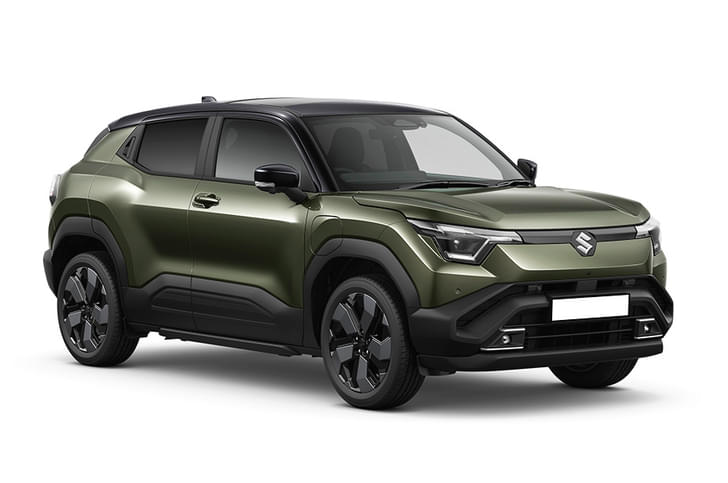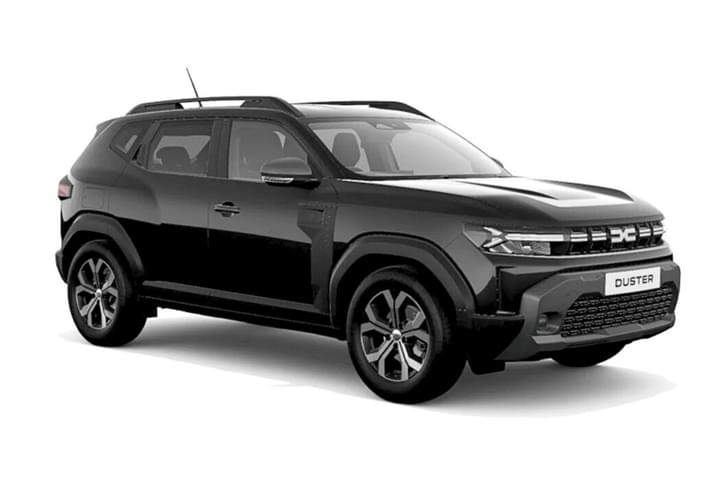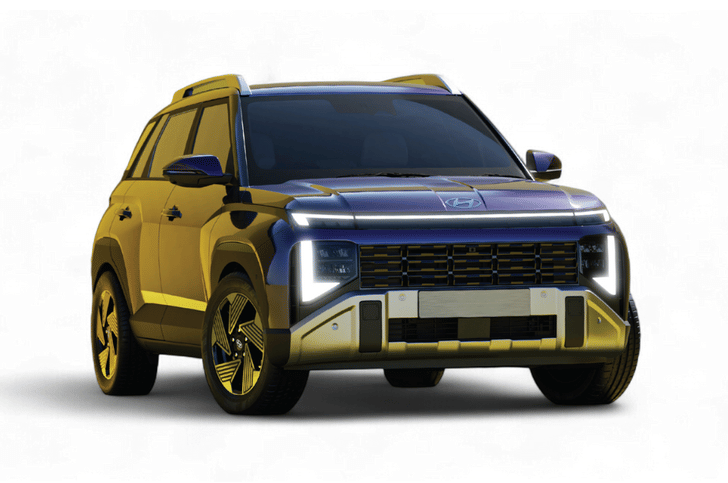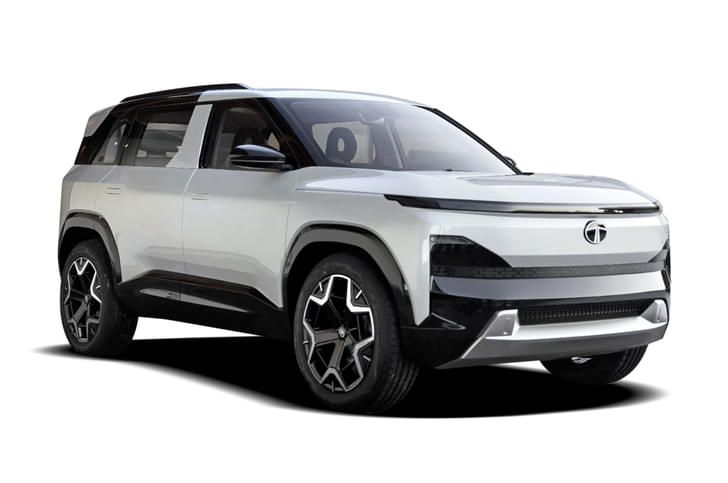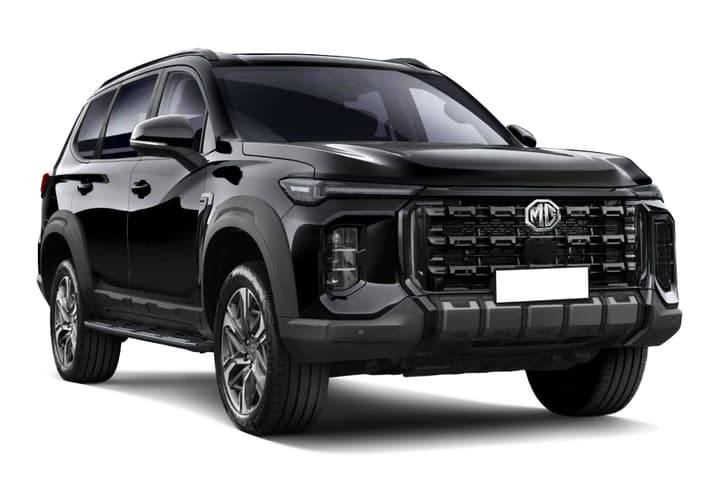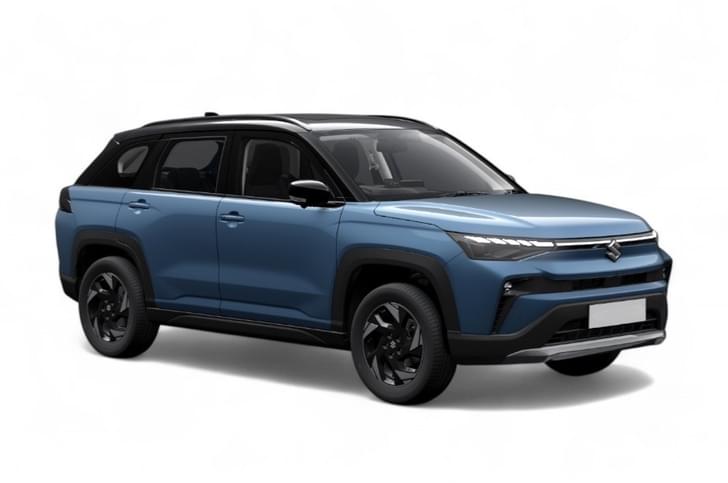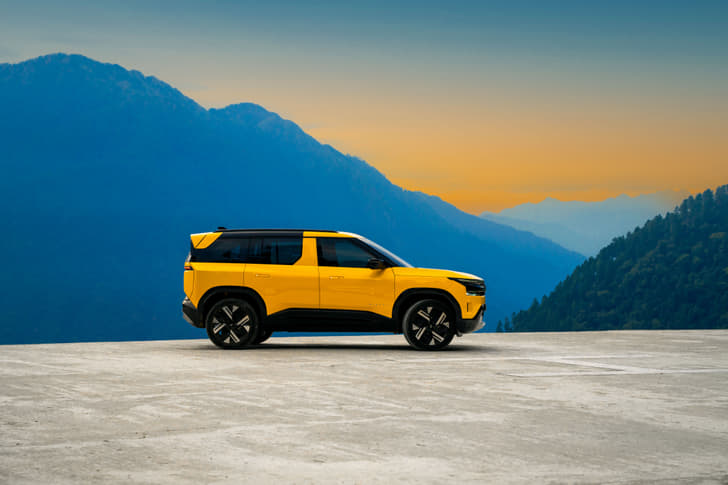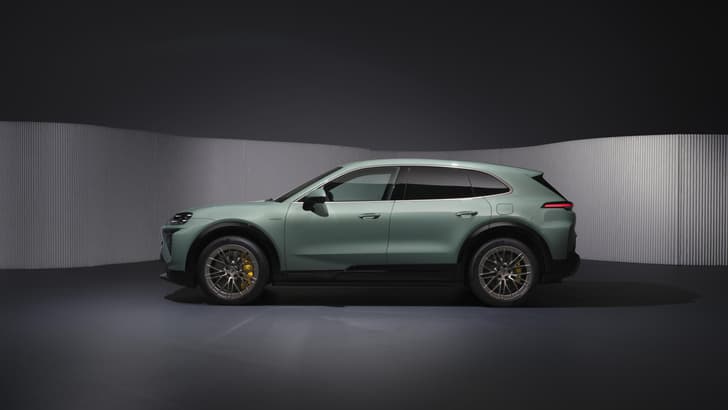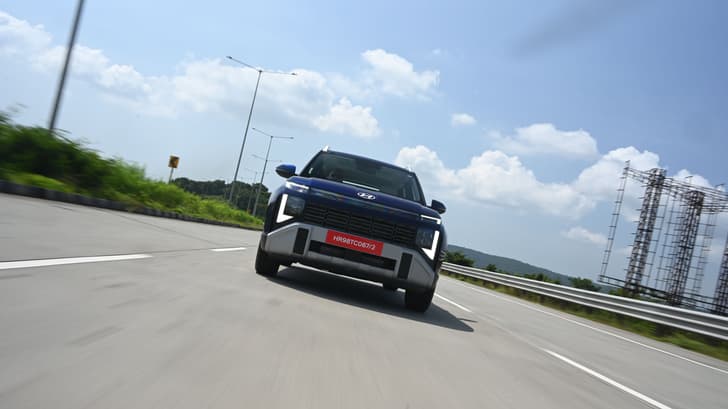It has a freshness, a newness you’ve never experienced in previous Audis. And that’s because the Q6 e-tron isn’t just another Audi, but a pivotal moment in the brand’s transformation to electric mobility. And though the nomenclature suggests that it logically sits between the Q4 e-tron and the Q8 e-tron, the Q6 e-tron is technically far removed from its siblings, and in fact, makes them look outdated. We know the Q8 e-tron – available in India – rather well, so to make comparisons with the all-electric flagship is the obvious thing to do, but the fact is that the Q6 e-tron has more in common with the electric Porsche Macan than any Audi.

The heart of the Q6 e-tron is the PPE (Premium Platform Electric) platform, which is shared with the Macan EV. Unlike the Q8 e-tron, which is essentially an ICE conversion, or the Q4 e-tron that's based on VW’s now dated MEB platform, the PPE is a state-of-the-art ‘born-electric’ architecture that has been drawn from the full breadth of learnings from Audi’s first crop of e-tron models. The PPE comes with the latest software, super-efficient electric motors, an energy-dense battery, and crucially, an 800V architecture (for faster charging and improved efficiency) to take the game ahead of German luxury EV rivals that Audi has lagged behind.
Audi Q6 e-tron battery, motor
The Q6 e-tron’s 100kWh battery is made up of 180 high-density prismatic cells packed into 12 modules, which gives it a class-leading range of 625km. This is a good 25km more than the Q8 e-tron, despite the latter having a significantly bigger 114kWh battery and 30 percent higher energy density. The battery can be charged from 10 to 80 percent in under 21 minutes, and a 10-minute charge can give 255km of range. However, in India, these figures are academic as you’ll need a 270kW charger to achieve these charging speeds.
Though there will be rear-wheel-drive models down the line, the mainstay of the Q6 e-tron range, true to the brand’s Quattro lineage, is four-wheel-drive. 4WD comes in two, state-of-the-art electric motors that have been developed in-house. The front axle gets an asynchronous motor (ASM) developing 140kW, whilst the rear gets a more powerful 280kW permanent-magnet synchronous motor (PSM). They develop a combined maximum output of 388hp (in launch control mode) and a potent 516hp in the SQ6 e-tron, which we also drove.
.png?w=700&c=0)
Technical highlights include new hairpin windings in the ASM to maximise current flow, silicon carbide semiconductors in the pulse inverter, a dry sump and electric oil pump in the gearbox, and direct oil cooling of the electric motors. All this tech increases efficiency and power density, and reduces the usage of rare-earth elements. This in turn reduces manufacturing costs and the impact on the environment.
The all-new platform also sports a new steering system, multi-link front and rear suspension, and optional adaptive air suspension that were fitted to our test cars. It’s not clear if the India-spec cars will get the adaptive suspension or the passive damping system (FSD), which, for the first time in an Audi, is a part of the standard suspension.
.png?w=700&c=0)
Compared to the Q8 e-tron, the Q6 e-tron is shorter by a significant 130mm, but the 2,899mm wheelbase is only 29mm shorter. The long wheelbase and short overhangs give the Q6 e-tron a nicely balanced proportion and sitting on 21-inch wheels (likely to drop to 19 inchers for India), it has an attractive and sporty stance. The prominent ‘Quattro blister’ at the rear adds muscle to the car and the closed, inverted single-frame grille follows Audi’s new design language for the e-tron family. There are charging ports on both side, and the flaps open and close electrically which is a cool touch.
A standout feature that many Indian buyers will love are the light signatures for the headlights and tail-lights. The Matrix LED headlights and OLED tail-light combo can be personalised to give eight different digital light signatures.
Audi Q6 e-tron interiors
The Q6 e-tron’s cabin is a quantum jump ahead of previous Audis and the highlight is the all-new, feature-packed infotainment system powered by the latest software that has taken years to develop. After the serious software issues with VW’s MEB platform, Audi took no chances and has developed a powerful electronic architecture capable of running five high-performance computers. They swiftly handle a mind-boggling number of functions and features the Q6 e-tron comes with.
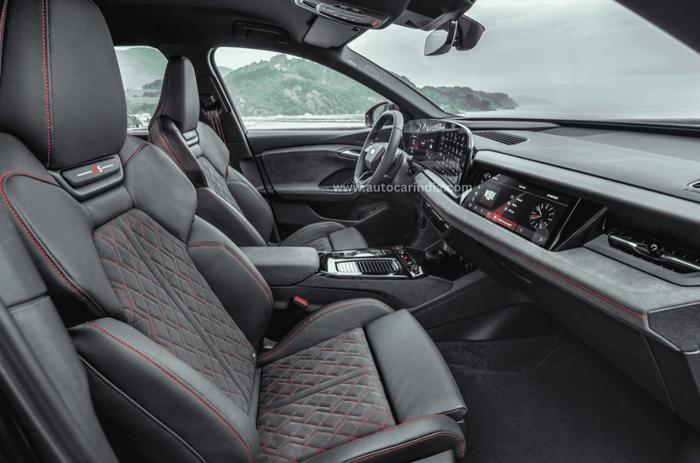
Audi’s long-in-the-tooth Virtual Cockpit has been replaced by a massive, free-standing curved screen that houses a 11.9-inch instrument cluster and 14.5-inch MMI touch display. In addition, there’s an optional 10.9-inch MMI display for the front passenger, which Audi says is unique to this segment.
So how does it all work? Except for the starter button, and a few more capacitive touch functions housed on the lower part of the centre console, there are no other hard buttons; all the functions are housed on the centre screen. It’s a bit overwhelming at first, but the menus and sub-menus are logically laid out with drop down tabs, and the most frequently used functions can be moved to the fixed side display. The aircon temperature adjustment is also conveniently fixed on the lower half of the main screen, but not so convenient is the fan speed adjust, which sits inside the main menu and is a bit slow to respond. Audi encourages us to use one of the 800 voice commands as an easier way to operate the aircon, which it is, once you remember the specific commands.
.png?w=700&c=0)
Also, EV geeks will be disappointed that just like with the Q8 e-tron, there aren’t any graphs and statistics beyond the range and SOC. Having stats for real-time running or each trip would have been nice, but Audi says its customers don’t really want an information overload. Besides these few irritants, the all-new infotainment system works absolutely brilliantly. It’s very quick to respond, the graphics are sharp, and adjustments for things like the exterior and interior lighting, cockpit display, ADAS functions, and navigation are easy to access on the move. If anything, the screens are too shiny and pick up reflections. A matte-screen finish like in the Hyundai Ioniq 5 would have made it less reflective, but Audi designers says the extra gloss on the screens goes well with the piano black theme of the interiors.
.png?w=700&c=0)
Another thing that's not easily accessible is your mobile phone, which sits out of view in a vertical charging dock inside one of the cubbyholes in the central console. Again, Audi says this is deliberate to minimise driver distraction, and the phone is a big source of that.
The cabin has a fresh and rich air to it with gloss black finishes all around. The busy-looking switch pad on the driver’s side door (which conveniently houses the headlights and fog light switches) is also nicely topped with a piano black veneer.
.png?w=700&c=0)
The capacitive touch steering wheel controls work quite well, unlike those in the latest Mercs, which are infuriatingly slow to respond. And, if there’s a quibble, it’s the flimsy feel of the aircon vents, which could have had more heft in the way they operate.
The front seats are firm but meticulously bolstered to give you the right amount of support. They keep you comfortable and fresh even after long hours behind the wheel. Legroom at the rear is pretty good, but the back seat itself is not as plush as we would have liked. The backrest is a touch upright and you sit in a knees-up position.
.png?w=700&c=0)
No complaints about luggage space, which is quite generous. The 526-litre boot comfortably housed a couple of big and smaller bags, whilst the 64-litre frunk is very useful for smaller items other than your charging cables.
Audi Q6 e-tron ADAS features
The Augmented Reality (AR) heads-up display on the Q6 e-tron is the best in the business. We just loved the clarity of the numbers, the real-time display of satnav data, warning displays when you’re too close to the vehicle in the front or straying from your lane. The data also glides in and out of your view in a cool manner.
.png?w=700&c=0)
The ADAS is easy to activate and switch off, but we have to say that the Lane Keep Assist function, which doesn’t quite keep the Q6 e-tron in the centre of the lane, needs better calibration.
Audi Q6 e-tron performance
The claimed 0-100kph time of 5.9 seconds tells you that the Q6 e-tron is brisk, if not very quick. But it’s not the numbers that tell the story. It's the utterly smooth and linear manner in which the Q6 e-tron serves up 388hp that is its forte.
Floor the accelerator pedal and there’s no snappy burst of power typical of many EVs, which after providing initial thrills can get uncomfortable for passengers. Instead, there’s a nice strong surge of power that wafts you to the speed limit before you know it.
.png?w=700&c=0)
The Q6 e-tron is all about making your drive rapid and stress-free, and on the Spanish motorways, driving fast never felt easier. EVs are expected to be quiet and refined but the Q6 e-tron is shockingly so. There’s very little motor whine, minimal road and wind noise, and if you want some sound, you need to switch to Dynamic mode that pipes in a deep growl through the speakers. But it’s not just for the soundtrack that you need to switch to Dynamic mode. It was actually my default setting for most of the drive as Comfort is a bit too soft. And, on the undulating and twisty country roads outside San Sebastián, the Q6 e-tron would heave up and down on its air springs and feel a bit floaty.
.png?w=700&c=0)
The good thing is that the steering is responsive and apart from a bit of slack around the straight-ahead position, it’s quite precise and makes flicking the Q6 e-tron on a twisty road much less of a handful than you would think. The ride is very comfortable and on the soft side, but overall body control is good thanks to the stiff chassis. The brakes are superb, too, with a seamless transition from regenerative to friction braking, although the pedal travel is quite long. Audi has revamped its regeneration strategy with the Q6 e-tron: you get three levels of regen, which can be adjusted via steering-mounted paddle shifters, and shifting the drive controller to B gives you ultra-strong regen for one-pedal driving.
Audi SQ6 e-tron performance
The SQ6 e-tron with 516hp is the variant to have for a more engaging and entertaining drive. You instantly know how potent it is when you floor it and get pinned to your seat. The SQ6 e-tron does 0-100kph in a very rapid 4.4sec and you really have to watch your speed because a mere flex of your right foot will catapult you to the wrong side of the speed limit – and potentially a big fine.
.png?w=700&c=0)
The SQ6 e-tron also has a stiffer suspension and a louder artificial soundtrack than the Q6 e-tron, but what makes it genuinely sportier is its rear-wheel-drive bias that feels great on a winding road. Powering through tight corners you can feel the rear squat nicely, and even with the traction control on, the SQ6 e-tron nicely tightens its line. This rear-wheel-drive adjustability, the ability to pivot the car with a dab of the accelerator make the SQ6 e-tron deeply satisfying to drive.
Audi Q6 e-tron price, verdict
The good news is that the SQ6 e-tron will also be coming to India sometime next year, soon after the Q6 e-tron. There’s no word on pricing yet, but we estimate the Q6 e-tron to cost around Rs 85 lakh with the SQ6 e-tron going just beyond Rs 1 crore. The Q6 e-tron is just the start of a new wave of Audis coming our way on the PPE platform, and the next model is likely to be the A6 e-tron sedan. Exciting times ahead for Audi.

























